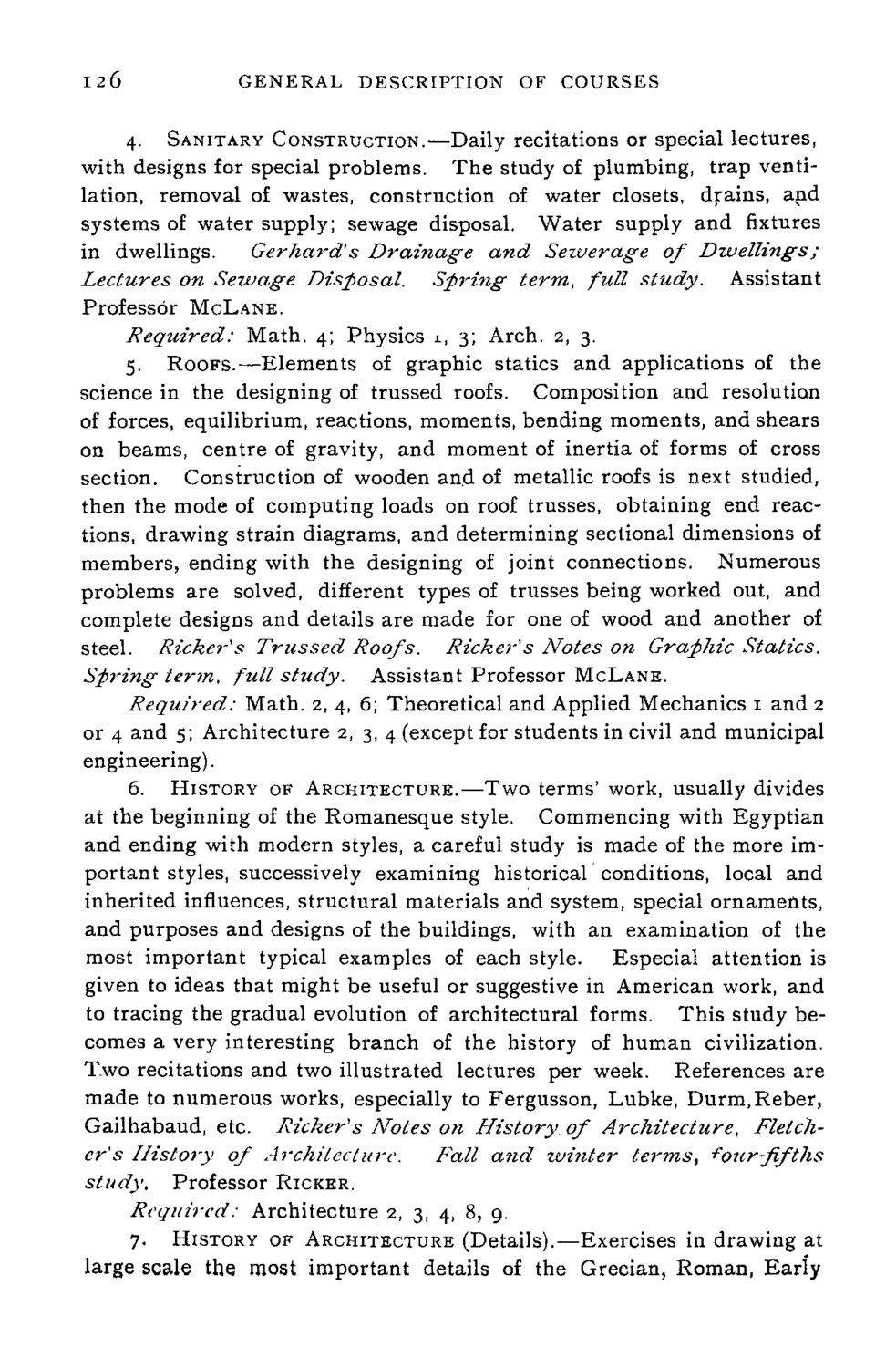| |
| |
Caption: Course Catalog - 1896-1897
This is a reduced-resolution page image for fast online browsing.

EXTRACTED TEXT FROM PAGE:
126 GENERAL DESCRIPTION OF COURSES 4. SANITARY CONSTRUCTION.—Daily recitations or special lectures, with designs for special problems. The study of plumbing, trap ventilation, removal of wastes, construction of water closets, drains, and systems of water supply; sewage disposal. Water supply and fixtures in dwellings. Gerhard's Drainage and Sewerage of Dwellings; Lectures on Sewage Disposal. Spring term, full study. Assistant Professor MCLANE. Required: Math. 4; Physics 1, 3; Arch. 2, 3. 5. ROOFS.—Elements of graphic statics and applications of the science in the designing of trussed roofs. Composition and resolution of forces, equilibrium, reactions, moments, bending moments, and shears on beams, centre of gravity, and moment of inertia of forms of cross section. Construction of wooden and of metallic roofs is next studied, then the mode of computing loads on roof trusses, obtaining end reactions, drawing strain diagrams, and determining sectional dimensions of members, ending with the designing of joint connections. Numerous problems are solved, different types of trusses being worked out, and complete designs and details are made for one of wood and another of steel. Ricker's Trussed Roofs. Ricker's Notes on Graphic Statics. Spring term, full study. Assistant Professor MCLANE. Required: Math. 2, 4, 6; Theoretical and Applied Mechanics 1 and 2 or 4 and 5; Architecture 2, 3, 4 (except for students in civil and municipal engineering). 6. HISTORY OF ARCHITECTURE.—Two terms' work, usually divides at the beginning of the Romanesque style. Commencing with Egyptian and ending with modern styles, a careful study is made of the more important styles, successively examining historical conditions, local and inherited influences, structural materials and system, special ornaments, and purposes and designs of the buildings, with an examination of the most important typical examples of each style. Especial attention is given to ideas that might be useful or suggestive in American work, and to tracing the gradual evolution of architectural forms. This study becomes a very interesting branch of the history of human civilization. Two recitations and two illustrated lectures per week. References are made to numerous works, especially to Fergusson, Lubke, Durm.Reber, Gailhabaud, etc. Ricker's Notes on History.of Architecture, Fletcher's History of Architecture. Fall a?id winter terms, four-fifths study. Professor RICHER. Required: Architecture 2, 3, 4, 8, 9. 7. HISTORY OF ARCHITECTURE (Details).—Exercises in drawing at large scale the most important details of the Grecian, Roman, Early
| |